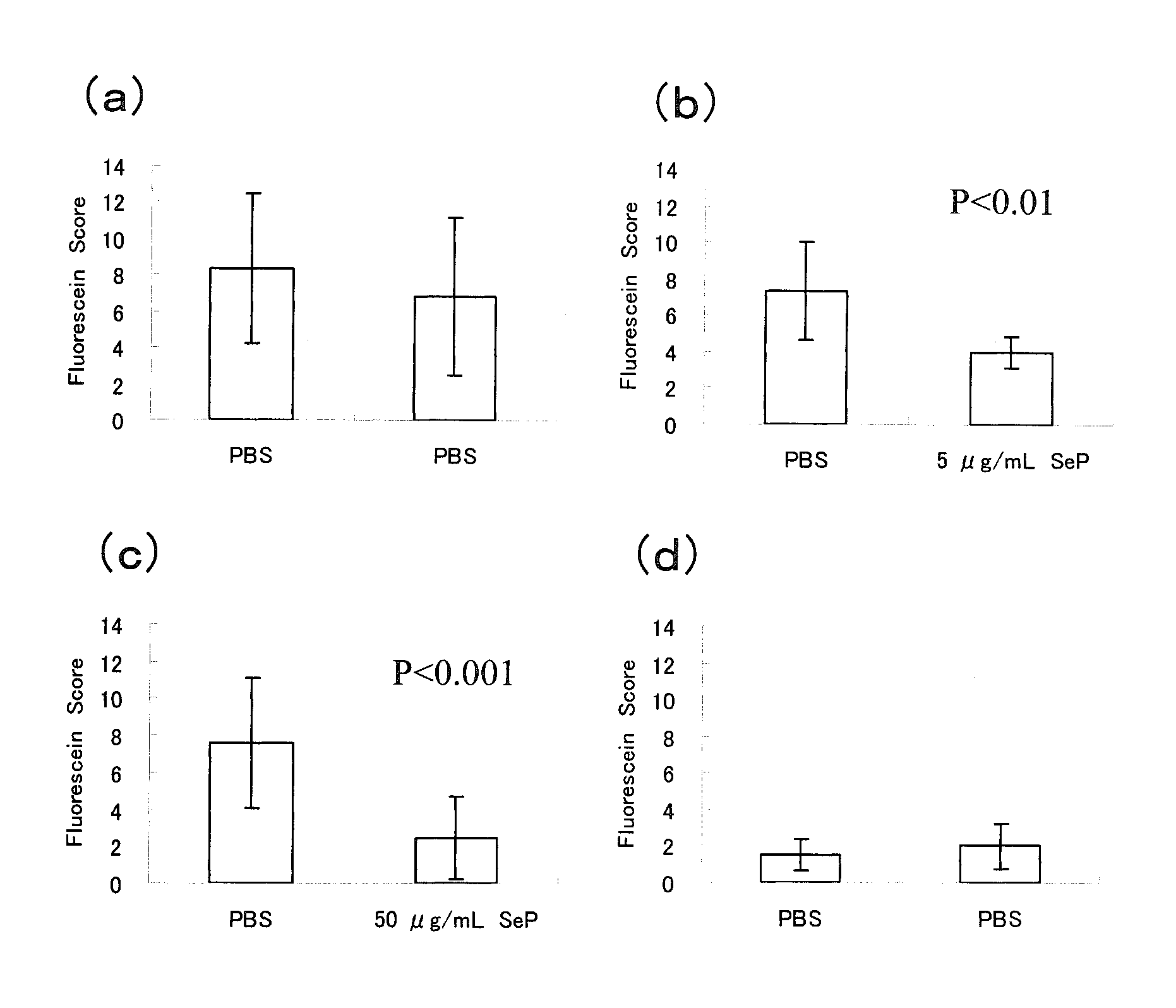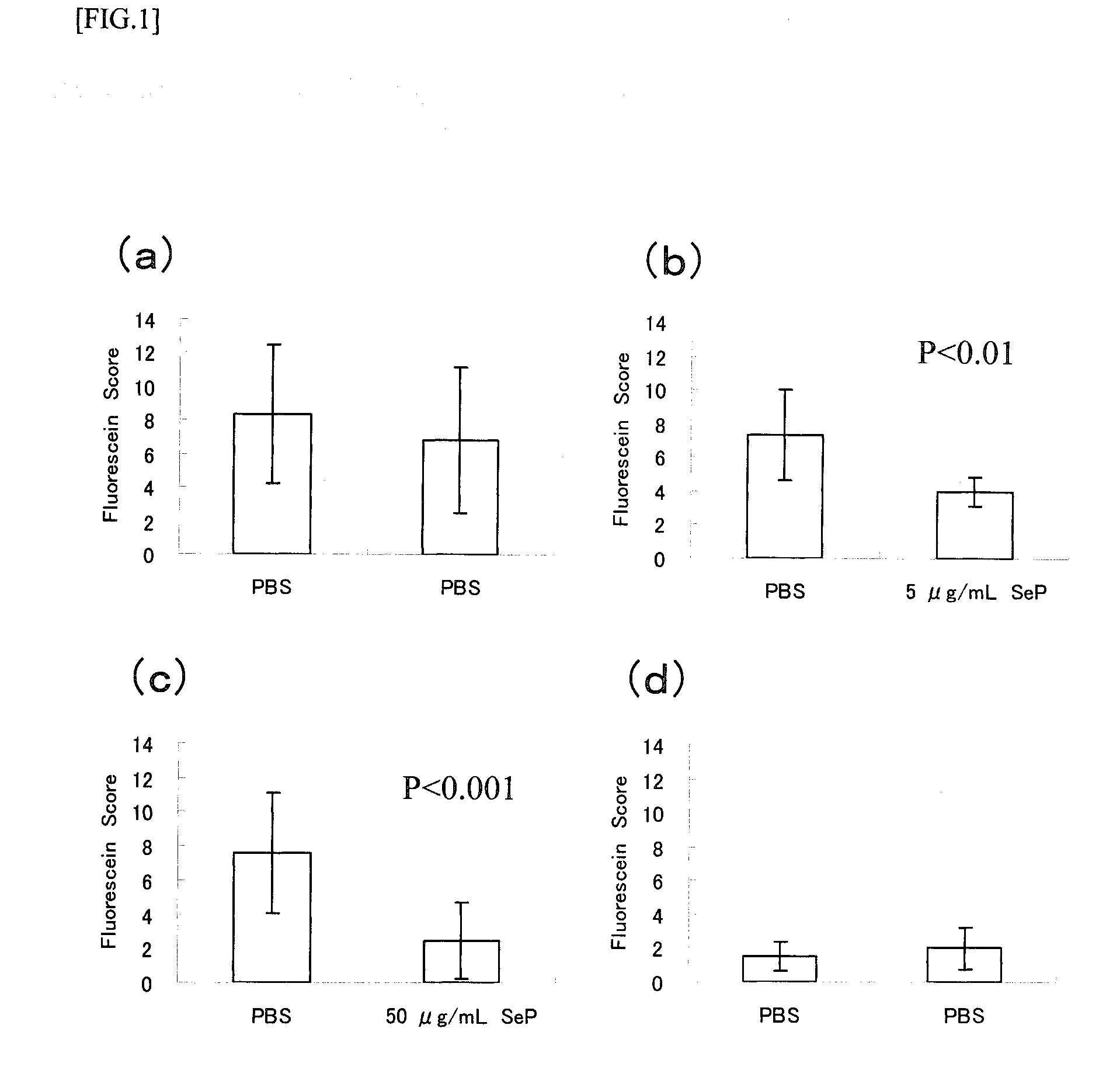Prophylactic or therapeutic agent for corneal/conjunctival disease
a corneal/conjunctival disease and treatment agent technology, applied in the direction of peptides/proteins, drug compositions, peptides, etc., can solve the problems of corneal epithelial damage such as superficial punctate keratopathy (spk) among contact lens wearers, serious impairment of vision and barrier function, and outbreaks of corneal epithelial damage such as spk, and achieve excellent prophylactic or therapeutic effects
- Summary
- Abstract
- Description
- Claims
- Application Information
AI Technical Summary
Benefits of technology
Problems solved by technology
Method used
Image
Examples
example 1
[0050]Preparation of Selenoprotein P
[0051]Selenoprotein P was purified from plasma essentially as described by Saito Y. et al., J. Biol. Chem., Vol. 274, p. 2866 to 2871, (1999).
[0052]Two litters of frozen fresh human plasma was thawed completely in a warm water bath, and placed in a low temperature chamber. To this was gradually added 100 g of PEG 4000 by a small quantity each time under stirring. The mixture was further stirred for 1 hour after the addition of the total quantity and centrifuged for 20 minutes at 10,000×g. The supernatant was collected, and filtered through AP25 (Millipore). A column filled with 100 mL of heparin sepharose (Amersham Pharmacia Biotech) was equilibriated in advance with 20 mM phosphate buffer (20 mM phosphoric acid (pH 7.4), 0.15 M NaCl, and 0.2 mM EDTA) and the whole filtrate obtained was applied to the column. After washing the column with 20-fold volume of equilibrium buffer, the adsorbed proteins were eluted with a linear gradient of salt from 0....
example 2
Therapeutic Effects Test on Corneal / Conjunctival Epithelial Disorders
[0055]According to the method of Fujihara et al. (Invest. Ophthalmol. Vis. Sci. 42, 96-100, 2001), the animal model for corneal / conjunctival epithelial disorder caused by dry eye was prepared as shown below, and the curative effects of selenoprotein P on the corneal / conjunctival epithelial disorder were evaluated.
[0056]Using both eyes of the animal for the experiment: one eye was used for control and to the other eye was instilled a drug solution, it was enabled to make the comparison between both eyes within the same individual.
(Experimental Method)
[0057]Seven-week-old male Sprague-Dawley rats were anesthetized with pentobarbital (35 mg / kg intraperitonealy) and the extraorbital lacrimal glands of both eyes were removed. And then the rats were used as the dry eye models.
[0058]From the following day after extraction of the extraorbital lacrimal glands, phosphate buffered saline (PBS) was instilled into the left eyes...
PUM
| Property | Measurement | Unit |
|---|---|---|
| thickness | aaaaa | aaaaa |
| body weight | aaaaa | aaaaa |
| body weight | aaaaa | aaaaa |
Abstract
Description
Claims
Application Information
 Login to View More
Login to View More - R&D
- Intellectual Property
- Life Sciences
- Materials
- Tech Scout
- Unparalleled Data Quality
- Higher Quality Content
- 60% Fewer Hallucinations
Browse by: Latest US Patents, China's latest patents, Technical Efficacy Thesaurus, Application Domain, Technology Topic, Popular Technical Reports.
© 2025 PatSnap. All rights reserved.Legal|Privacy policy|Modern Slavery Act Transparency Statement|Sitemap|About US| Contact US: help@patsnap.com


